

From foe to friend: the many ways AI is transforming products
source link: https://uxdesign.cc/from-foe-to-friend-the-incredible-ways-ai-is-transforming-products-148dd7c61ec2
Go to the source link to view the article. You can view the picture content, updated content and better typesetting reading experience. If the link is broken, please click the button below to view the snapshot at that time.
From foe to friend: the many ways AI is transforming products
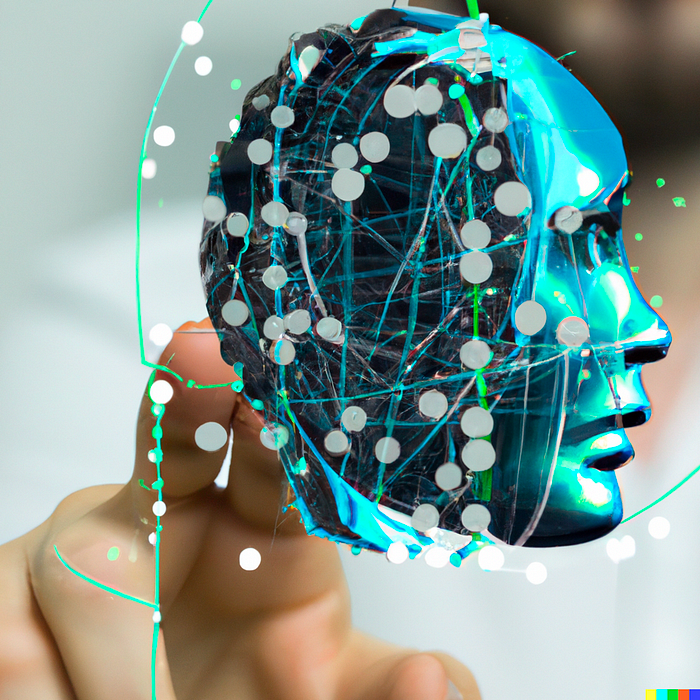
https://openai.com/dall-e-2/ Prompt: Artificial Intelligence impact
AI has been living among us for over 65 years.
First of all, let’s make it clear that AI is not really a new thing, and there are tons of products in the market which are already powered and enhanced by this technology. The study of AI as a subject started in the 1950s with the invention of electronic computers.
Throughout my career, I’ve worked on many projects from various industries which differentiated themselves solely based on AI-powered features. Millions of people currently use these products and may not have realised that this is the same kind of technology behind chatGPT.
Today, chatGPT stands out from other AI technologies because it has been trained using lots of text data. This makes it able to understand human language and create responses that seem like they were written by a person when asked different questions or given instructions.
Below, I have analysed 5 of the greatest advantages that you likely experience in other typical daily applications, perhaps without realising it.
1 — Adaptive, Personalised and Contextual UX
As customer data grows and preferences become more evident, machine learning and other technologies will enable digital products and services to offer an adaptive, personalised, and contextual user experience.
Businesses will be able to leverage data about customers and their actions to utilise machine learning and other technologies for creating adaptive, personalised and contextually-aware digital products and services. This will enable them to customise their services to the particular requirements and likes of separate customers, and to provide a more seamless and satisfying user experience.
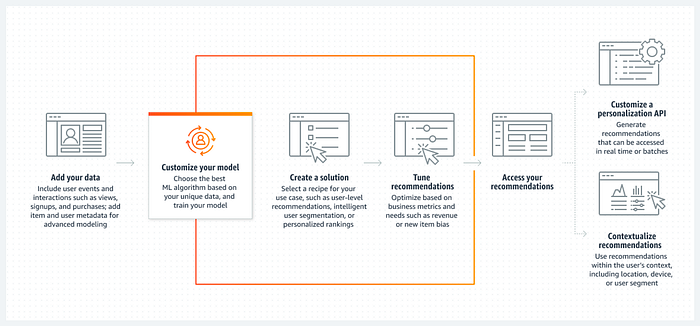
https://aws.amazon.com/personalize/ Amazon Personalize allows developers to quickly build and deploy curated recommendations and intelligent user segmentation at scale using machine learning (ML)
How will this be achieved exactly?
Predictive modelling & algorithms can analyse customer data & make personalised recommendations.
E.g. an online shop may use user browsing history or purchase data to show relevant products to a specific user.
Using geolocation & context data to customise UI/content for better user experience.
E.g. a weather app may show different info outdoors vs. indoors.
Companies leverage data & machine learning to personalise digital products for thousands/millions of users. This creates tailored experiences for segments & profiles.
It’s important to note that, providing a personalised and contextually-aware user experience also implies being transparent and respectful of user’s data, being able to comply with data privacy regulations and ensuring that user’s data is properly handled and protected.
2 — Automation
AI can help do tasks that need to be done over and over again, like entering data. This frees up people to work on tasks that are more complex.
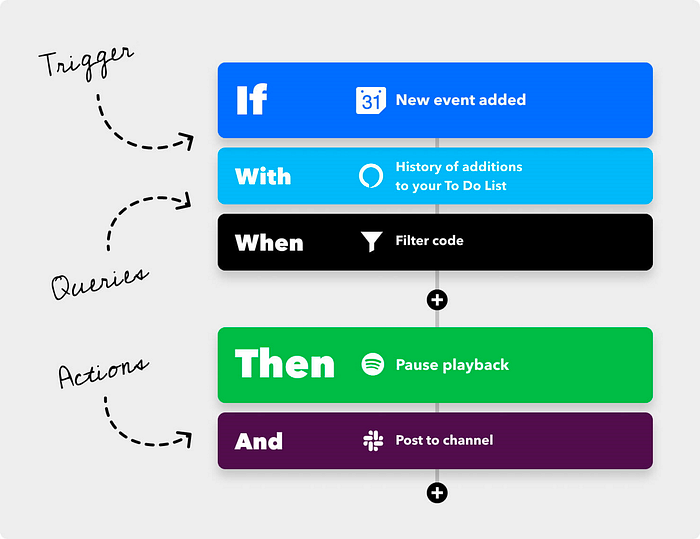
https://ifttt.com/docs/process_overview Custom automated flow example on IFTTT
The positive influence of AI Automation on UX design and products:
- Personalisation: tailors the user experience by analysing data on user behaviour and preferences, which can make the experience more relevant and engaging.
- Simplification: facilitates complex processes, rendering them to be more intuitive and attainable for a broader range of users.
- Efficiency: streamlining tasks, resulting in a faster and more efficient user experience.
- Self-Service: allows users to accomplish their goals without requiring human assistance (e.g., customer service chatbots).
- Error reduction: diminishes mistakes and enhance precision, boosting trust and faith in the product.
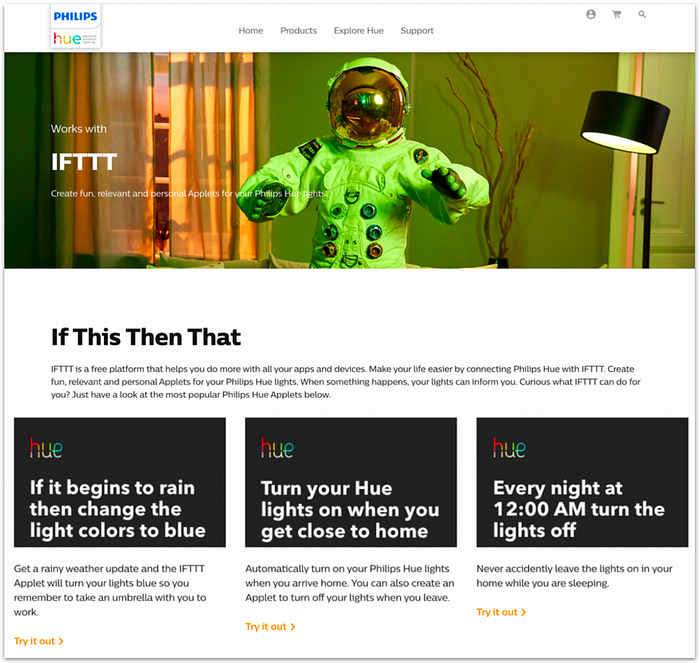
Phillips HUE Smart Lighting — Custom automation example with IFTTT support
It’s worth noting that automation also brings some challenges in UX Design:
- Transparency: Users must be informed about the automation process and its functioning to develop trust in the product.
- Flexibility: Automation can make it difficult to adjust to varying scenarios or user needs, so designers must consider how to make the automation process adjustable and capable of adapting.
- Interaction: Automation can reduce the need for human interaction, it’s important to re-think about how we could still maintain the human touch and engagement in the UX.
Overall, the key is to use automation as a tool to improve the user experience, not substitute it.
3 — Predictive analytics
Predictive analytics is like a crystal ball that allows you to anticipate everything that happens to the app and the actions to prevent or boost to develop an app that continuously delights the users.
The aim is to spot patterns and correlations in data and then use these discoveries to forecast future occurrences. It be utilised in pretty much every industry, such as healthcare, entertainment, finance, marketing, e-commerce and logistics among others.
Its a powerful tool that can help organisations to identify trends, patterns and relationships in data, which can be used to make more informed decisions and increase business revenue.
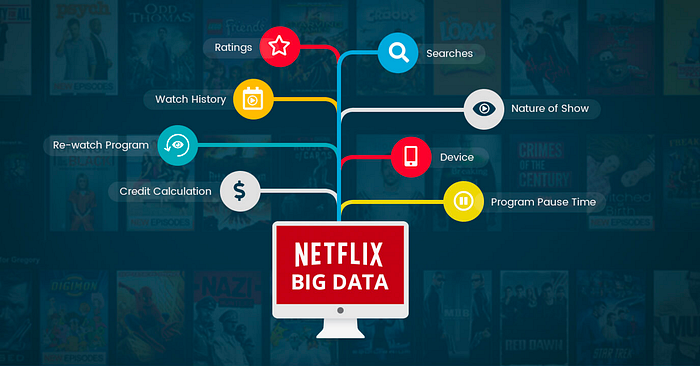
https://www.muvi.com/blogs/deciphering-the-unstoppable-netflix-and-the-role-of-big-data.html
Netflix uses predictive analytics to suggest movies and TV shows to viewers. Other know products that heavily rely on predictive analytics for personalisation are Spotify, Amazon, Waze and Uber.
Predictive analytics can also be used to detect anomalies and fraud, which can help companies keep their data safe and protect against malicious activity.
4 — Natural language processing
NLP is a branch of AI that focuses on making computers understand and process human language. It can improve customer service by making it easier for users to interact with digital products, such as voice search and chatbots.
ChatGPT is the first example that comes to mind when thinking of mastering this art. I asked about their reliance on NLP, and this was their response:
“As an AI language model, my functionality heavily relies on Natural Language Processing (NLP). I use NLP algorithms to understand and interpret natural language input from users, to generate responses that are relevant, accurate, and appropriate. NLP also allows me to perform tasks such as text classification, sentiment analysis, and named entity recognition. Therefore, NLP is a critical component of my functionality, and I rely on it extensively to provide users with the best possible experience.”
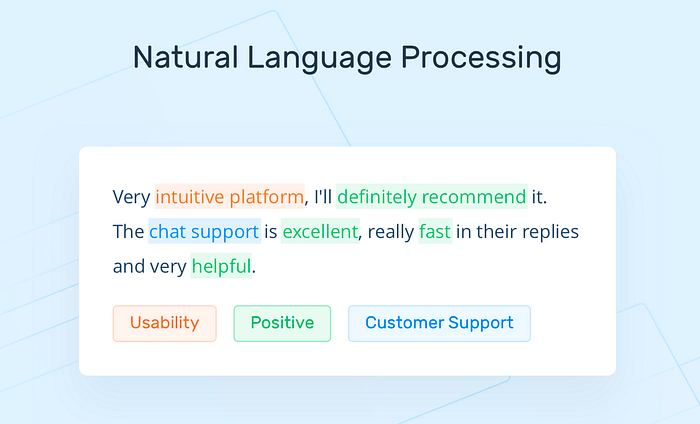
https://monkeylearn.com/natural-language-processing/ Example of how NLP analyses and understands human language.
AI can also analyse and comprehend images and videos, enabling features such as object recognition and facial recognition.
Natural Language Processing (NLP) provides a powerful tool to facilitate a better customer experience and simplify customer interactions. This can be applied to improve search (SEO) and recommendation systems (highly valuable in today’s e-commerce ind.), as well as creating new features for digital products.
5 — Image and video analysis
AI-powered image and video analysis can open up new possibilities for user experience (UX) design by providing more accurate and efficient methods for user input, analysis, and feedback.
AI can be used to analyse and understand images and videos, which can be used to improve search and recommendations, as well as enable new features such as object recognition and facial recognition.
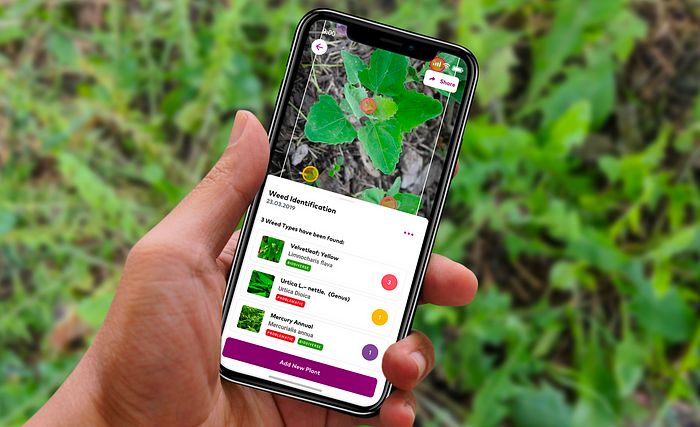
https://www.xarvio.com/de/de/products/scouting.html
xarvio Scouting App (AI assistant for Agriculture industry) is a powered by an image recognition algorithm that continuously learns and improves results upon user’s feedback and database growth.
We started the concept for this product back in 2017 in collaboration with BASF xarvio at intive. Nowadays it’s available in 45 countries, 15 languages, and has over 4 million Appstore downloads. As a designer, I confidently saw the potential for innovation and providing a top-notch UX with these emerging technologies.
Image recognition facilitates the process of tagging objects in photos, thus making it easier for users to locate certain images. Additionally, video analysis can be used to create subtitles or captions, increasing the accessibility of videos to a wider range of people.
AI-powered analysis can also be used to provide real-time feedback to users during video chats, such as by detecting and alerting users to poor lighting or poor audio quality. Overall, the use of AI in image and video analysis can greatly enhance the UX of many different types of digital products and services.
Is the hype surrounding AI truly a novel experience for us in the IT industry?
These new technologies are not really new for us designers. My first experience with features of this nature was the Photoshop “Actions” feature, which allows us to automate tasks there, and was first introduced in version 4.0 of Adobe PS released in 1996.
What we are seeing today is the results of years of evolution since then and how these features were refined and developed to its today status which might come too much as a surprise if you weren’t really a witness of that since the beginning.

https://www.photography-raw.com/guide-to-photoshop-actions/ Screenshot of Adobe Photoshop “Actions” feature
For me, it’s quite obvious that this is not here to steal our jobs. It’s meant to save us time from the repetitive tasks that are a waste of our energy and time. If we use this smartly, we will become more efficient and use the extra time to learn new things at a faster pace.
The tasks you will no longer do manually have the following characteristics:
- You don’t do them only for enjoyment (and if you do, it’s a hobby and you should keep doing it…!)
- They are time-consuming and require a lot of manual effort to complete.
- They involve a sequence of steps that are repeated regularly.
- They are well-defined and have a clear input and output.
- They do not require complex decision-making or human judgment.
- They are performed frequently enough to justify the time and effort needed to automate them.
- They follow a consistent pattern and do not require a lot of variation in the input or output.
- They are prone to errors and inconsistencies when done manually.
How can we make this easier to digest and be embraced, rather than feared?
People may be scared of new technologies for a variety of reasons that can range from fear of the unknown, to lack of control, to potential negative consequences, to cultural and social norms, and even to past experiences.
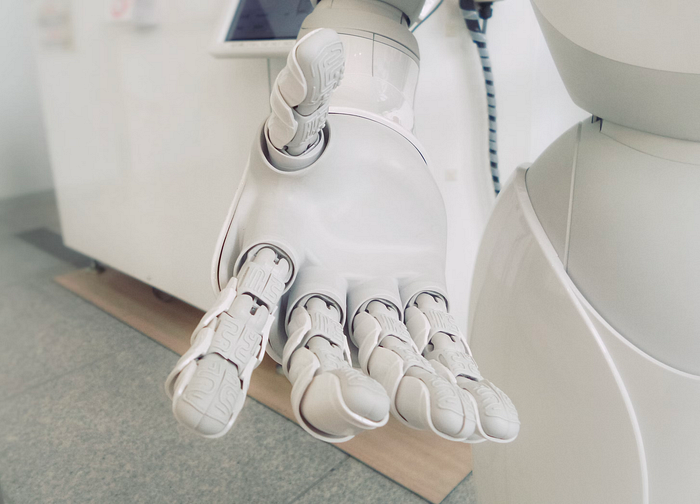
This fear can be a powerful force, preventing people from taking advantage of new opportunities and technologies. It can be especially difficult to overcome if these fears have been engrained in one’s culture or upbringing.
Some may argue that this fear is a sensible approach, as new technologies often come with risks and potential drawbacks. However, there are many potential benefits that come with these technologies, and it is important to consider both sides of the equation before making any decisions.
Do you enjoy the benefits already? Help spread the word!
- Share what you know and simplify vocabulary around this topic; it’s not a complex logic to understand beyond the new terminology that is managed, and this might be what is holding some people back from integrating these tools into their daily lives.
- Engage educators and show them how to use these tools, adjust teaching/evaluation methods, and grant all students equal access to knowledge.
- Write blog articles (just like this) and let the world know how they can take advantage of this technology, either as employees, students, or for daily life matters.
- If you work making products: Take advantage of the endless possibilities this offers to improve users experience. Provide efficient task flows, optimized SEOs, customize content, and give your audience what they expect. Boost businesses by covering the right needs and not generic personas.
We can use technology to give us more time for leisure and relaxation. However, we must be aware that this extra time should not be wasted on social media; instead, we should use it to spend time with our loved ones, relax, and enjoy life. We should also use it to learn new skills and tackle real-world issues. Our success or failure in this era of disruption will largely depend on how we spend this extra time we are gaining.
Recommend
About Joyk
Aggregate valuable and interesting links.
Joyk means Joy of geeK